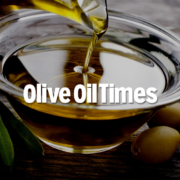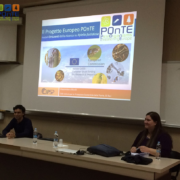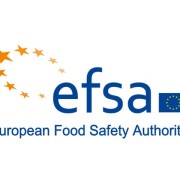OLIVE OIL TIMES | Strategy to contain Xylella fastidiosa organically shows promise
By YLENIA GRANITTO
Researchers of the University of Foggia in collaboration with Copagri, the confederation of agriculture manufacturers, started a trial in 2015 on olive trees affected by Rapid Complex Desiccation, or so-called CoDiRO, the epidemic caused by the Xylella fastidiosa bacterium, to evaluate the ability to contain its symptoms with organic products with different activities like fertilizers, agrochemicals and resistance inducers combined with good agricultural practices.
The results, which will have to be confirmed through additional tests, highlight the ability of plants to react to pathogenic attack that, based on the first survey, did not cause an impairment of production.
We met Francesco Lops, professor of plant pathology at the University of Foggia and scientific coordinators of the survey to better understand the research.
“The direction of Copagri contacted us to provide answers about the condition of olive trees affected by rapid desiccation,” he explained to Olive Oil Times. With the professor of plant pathology at the University of Foggia, Antonia Carlucci, and the director of Copagri, Fabio Ingrosso, Lops coordinated the launch of research activity conducted last year in different olive groves in the area of Matino, in the province of Lecce.
“At this point we have to learn to live with the disease,” said Lops. “Especially in the infected area, the main need and purpose of the study is to find a remedy to prevent further progress.”
Lops said that the bacterium is enrolled in the list of quarantined pathogens and in these cases we should proceed with eradication to ward off the pathogen from the territory. This can be applied in areas ‘free’ from the bacterium, but in infected areas, the concept of quarantine is undermined since the pathogen has become settled. It is now apparent that the bacterium is existent throughout the Mediterranean basin.
“Since the bacterium lives in the xylem vessels, it is difficult to reach it, and to find products that have a direct effect on it is almost impossible, both for the difficulty to arrive at the vessels, and because there are not many antibacterial substances,” the professor explained.
“As in every host-pathogen relationship, there is always an action of mutual conflict. The spirit of the study consists of facilitating the response of the host plant and stimulating a reaction of effective block and containment.”
For this purpose, the researchers used various organic substances and made a comparison, in order to stimulate the plant and develop phytoalexins, which are barriers that the plant uses as a strategy in its internal war against the pathogen. “Our goal is to strengthen this attitude of the olive tree with organic substances, in accordance with Directive 2009/128/EC on sustainable use and management of pesticides,” Lops pointed out.
The results obtained from the tests both in the field and in vitro demonstrated the ability of olive plants to react to pathogenic attack, when actions of ordinary agronomic (plowing, milling, pruning) and phytoiatric management are implemented. Moreover, it seems that the best results were registered in the tests where two or more products, with different characteristics, have been combined.
This means that strategic actions that meet all the needs of the plant, from nutritional to protective and defensive, are desirable in this case. Therefore, after just 5 months of experimentation, the researchers consider it appropriate not to emphasize the results since the analyses on the assessment the bacterium Xylella fastidiosa were always positive in all samples and this means that it is present in the tissues of the treated plants.
Nevertheless, after the last survey carried out in November 2015, olive trees had not shown any symptoms. These preliminary and partial results of experimental activities carried out for one year need to be confirmed and validated by subsequent experiments that will be repeated over the coming months.
Published on August 25, 2016 by OLIVE OIL TIMES









